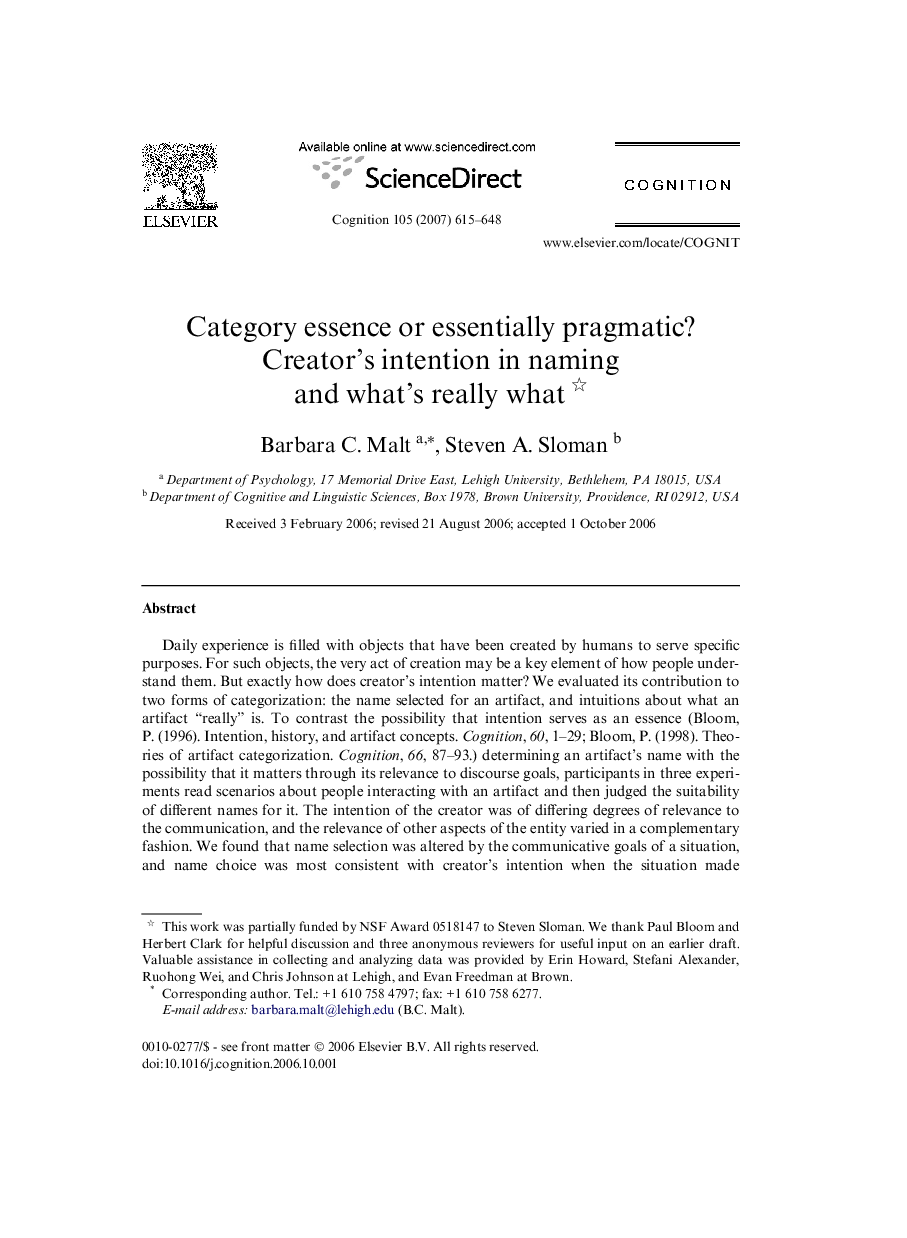| Article ID | Journal | Published Year | Pages | File Type |
|---|---|---|---|---|
| 926824 | Cognition | 2007 | 34 Pages |
Daily experience is filled with objects that have been created by humans to serve specific purposes. For such objects, the very act of creation may be a key element of how people understand them. But exactly how does creator’s intention matter? We evaluated its contribution to two forms of categorization: the name selected for an artifact, and intuitions about what an artifact “really” is. To contrast the possibility that intention serves as an essence (Bloom, P. (1996). Intention, history, and artifact concepts. Cognition, 60, 1–29; Bloom, P. (1998). Theories of artifact categorization. Cognition, 66, 87–93.) determining an artifact’s name with the possibility that it matters through its relevance to discourse goals, participants in three experiments read scenarios about people interacting with an artifact and then judged the suitability of different names for it. The intention of the creator was of differing degrees of relevance to the communication, and the relevance of other aspects of the entity varied in a complementary fashion. We found that name selection was altered by the communicative goals of a situation, and name choice was most consistent with creator’s intention when the situation made intention relevant to achieving those goals. In a fourth experiment, we used the same scenarios to test the possibility that intention serves as an essence determining intuitions about what an object “really” is. The impact of creator’s intention was modulated by the discourse context. These findings suggest that creator’s intention influences both name choice and intuitions about what something “really” is by virtue of its impact on how communicative goals are best realized.
